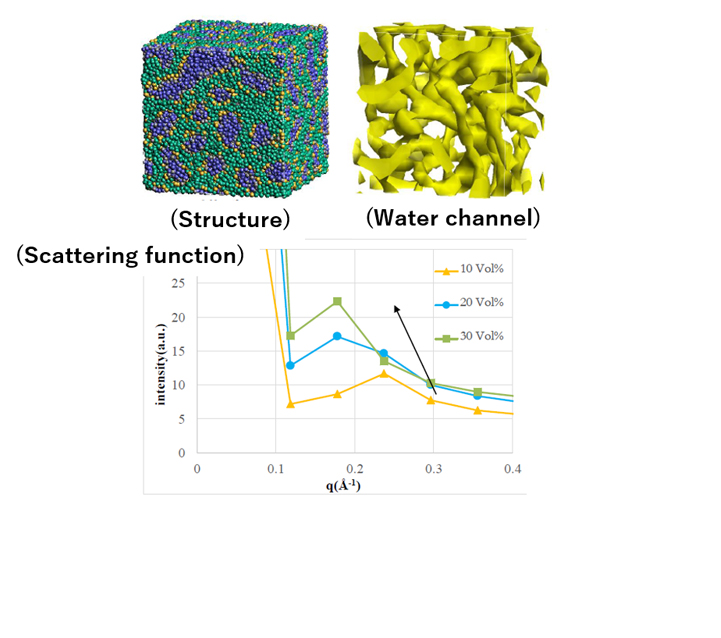- Quantum Chemistry / DFT
- DPD / Mean Field
- Multiscale Analysis
- Interface / Phase Separation / Particle Dispersion
- Materials Science
[Analysis Example] Phase-separated structure of polyelectrolyte using FMO-DPD
Prediction of χ parameters with FCEWS, and Mesoscale analysis of polymer electrolytes used in fuel cells
Using dissipative particle dynamics (DPD), a mesoscale simulation method, we have calculated the phase separation formed by polyelectrolyte and water. Applications include electrolyte membranes in fuel cells. Since protons move through the water channel structure, predicting the structure is important in material design.
In the following case study, DPD was used to analyze the structure formed in water by typical polyelectrolytes with a hydrophobic Teflon main chain and a hydrophilic sulfonic acid group on the side chain [1].
First, the polyelectrolyte is divided into segments (Figure 1), and the χ parameters (interaction parameters) between the segments are estimated by FCEWS, which can predict χ parameters with high accuracy by using the Fragment Molecular Orbital method (FMO). Four water molecules are considered as one DPD particle.
 Figure 1. Segmentation of polyelectrolyte and water
Figure 1. Segmentation of polyelectrolyte and water
Then, DPD was used to predict the phase-separation structures for different polyelectrolyte fractions. Figure 2 (top, left) shows a typical phase-separated structure, with green representing hydrophobic main chains, yellow representing hydrophilic groups, and blue representing water. The density distribution of water shows that a channel structure is formed. Figure 2 (bottom) shows the scattering function of water, which reproduces the experimental trend when the polyelectrolyte fraction is varied.
FCEWS is developed by Mochizuki lab. of Rikkyo Univ., and included in J-OCTA. For more details, please refer to references [1][2].
 Figure 2. Phase separation structure and scattering function
Figure 2. Phase separation structure and scattering function
- Reference
- [1] RSC Adv., 8, pp34582-34595, (2018)
- [2] J.Phys.Chem.B, 122, pp338-347, (2018)


